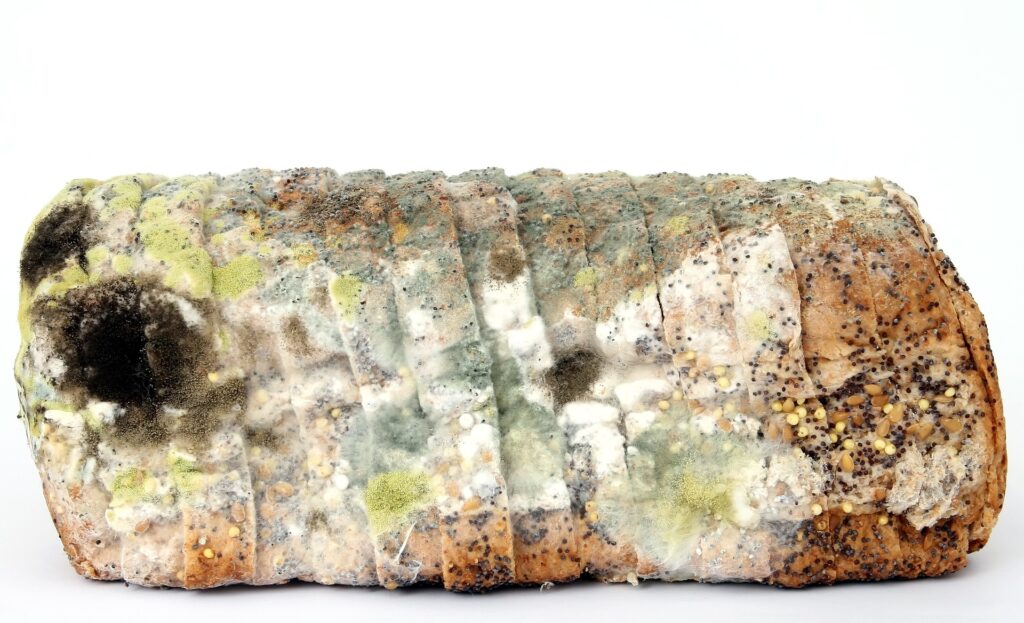Mould is often misunderstood. There are many myths out there about what it is, how it grows, and how to get rid of it. In this post, I try to dispel some of the most common myths about mould so that you can better understand this common household problem.

1. Mould is only found in old, damp buildings – FALSE
Contrary to popular belief mould is not exclusive to old, damp buildings. In fact, it can be found in virtually any kind of building regardless of age or the amount of dampness present. It is one of nature’s oldest forms of life. And it flourishes anywhere where there is an excess of water, food and warmth to support it.
Common mould-growing spots include leaky roofs or pipes, windows, bathrooms or kitchens, basements and unventilated attic spaces. These conditions can occur as easily in newer, modern properties as in older ones.
To prevent fungal growth you must take steps such as eliminating sources of moisture such as leaky plumbing fixtures. Also ensure ventilation by opening windows, maintaining a cleaning routine and consider the use of dehumidifiers.
You must remember that mould can get established almost anywhere. This means that prevention should be a priority in all kinds of buildings no matter how old they may be!
2. Mould is always black and ugly – FALSE
No, it is not always black and ugly. It can vary significantly in colour, ranging from yellow and green to pink and purple.
Although some behavioural traits are common among moulds of different colours e.g., their ability to feed off organic matter, moisture levels in the environment or particular temperature ranges – the exact colour you’ll see will depend upon the type of fungus that has taken hold.
So while it’s true that some types of mould are dark-coloured and unsightly, a range of other varieties may also exist in your home without you even knowing.
Do not assume that it will only turn up and look one particular way. If the conditions are ideal, and it smells like mould and acts like mould, and you suspect in may be mould, treat it like mould! You cannot afford not to!
To ensure your safety and well-being and that of your loved ones and pets, you must take swift action if you notice any form of fungus growing in your home.
3. Mould is not dangerous to your health – FALSE
Mould is a type of fungus, and although it may not appear immediately dangerous on sight, it can have serious effects on your health. Its all to easy to assume that too much fuss is being made about it. That is until it becomes a real and unpleasant problem.

Breathing in the spores can irritate your eyes, skin, nose, throat and lungs. Long-term mould exposure can affect your immune system. It can also lead to a wide range of potentially disabling health problems and even potential fatalities.
To ensure that it doesn’t negatively affect your health mouldy areas must be addressed immediately, safely and thoroughly. Efforts to do this become more difficult when mould has established itself and been present for an extended time.
Make sure that you understand the risks mould presents to protect yourself and those around you.
4. You can get rid of mould completely and easily by just cleaning it with bleach – FALSE
If only it were this simple… Mould needs to be treated at the source; otherwise, it is likely to resurface in different parts of the property. To effectively banish it for good, a thorough investigation should take place to find the primary cause(s) and treat it accordingly. This may include anything from air ventilation systems or blocked guttering that is causing condensation to spill onto walls and ceilings.
It is also necessary to eliminate sources of moisture such as leaking pipes or poor drainage. These may be contributing to dampness in your home.
Taking these steps and actively managing environments that are prone to developing mould can limit its chances of settling and getting comfortable in your home.
5. Mould only occurs in a dirty home – FALSE
Having visible mould in a household does not necessarily mean that the home is unclean or dirty. This fungal growth can be caused by a variety of environmental factors. These may include high humidity levels, condensation, excess moisture from water leaks and even structural issues like poor insulation and lack of ventilation.

Careful inspection of the affected areas can help to identify these underlying causes. Then corrective action can be taken to eliminate significant growth and reduce the risk of indoor air quality issues.
Good cleaning practices do help to prevent mould growth. But it is important to understand that this factor does not prevent mould on its own. Other, often more dire causes need to be addressed before it can truly be removed.
Mould is a naturally occurring organism and can be found both indoors and outdoors. Although it is vital to the ecosystem, inhaling or coming into contact with its spores can cause serious health problems, so it’s important to take steps to prevent its growth in your home.
Now that you know the facts about mould, you can take the necessary precautions to protect your property and your health. Remember: don’t assume, find out the facts for yourself so that you can make informed decisions about how to best protect yourself from this potentially harmful organism.